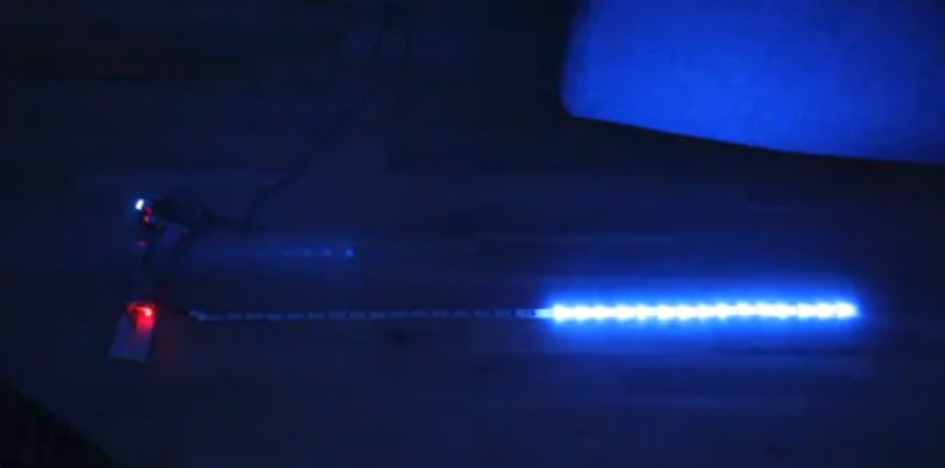LED Music Visualizer on a RaspberryPi - Write-up
written on 04 May 2017

This was a rather time consuming project I did in April of 2015. This was a project where the goal was to visualize music on an LED-strip. I used the RaspberryPi to be able to communicate with the strip. The projects consists of FFT, SPI communication, and some really wierd setup of client-server with caching of songs. Cobbled together with Python.
If you wanna see it in action here’s a clip:
The song is ‘C2C - Down the Road’, for the curious.
From what I remember this was on of my first advanced projects, and probably one of my favourites. I learned so much, and I was really proud at the time when I got it working… but it’s probably the most un-userfriendly thing I have made.
It was also my first try at doing anything with electronics, even just connecting three cables. Connecting LED-strip to my RaspberryPi without any idea of what I was doing, and finding out how to get them to light up was over half the fun.
Getting it to play
To be able to actually see a song on the strip, you have to do a couple of things:
- First of, SSH into the Raspberry Pi
- Make sure you have the server code on there
- Launch the server script with your desired settings.
- Convert the song on your other PC from MP3 to WAV, using the bundled batch script.
- Launch the client script with your desired settings.
Your part in this is now over, the scripts do the rest from this point.
- Let it run for some time while the FFT is all cached in a binary file.
- This binary “cache” file is now sent over to the server using TCP.
- The server then sends a message from the server to the client, telling it to start playing the song on your PC.
- At last the server/raspberrypi begins to light up the LED-strip with the values from the FFT.
But did I mention you have to restart both scripts when you want a new song, or another frequenzy channel to show on the LED-strip?
…so it’s not exactly elegant, and that’s probably why I like it so much. It was just a whole lot of fun putting together.
Dive into the code
If you want to see the code you can go check out this thing on GitHub.